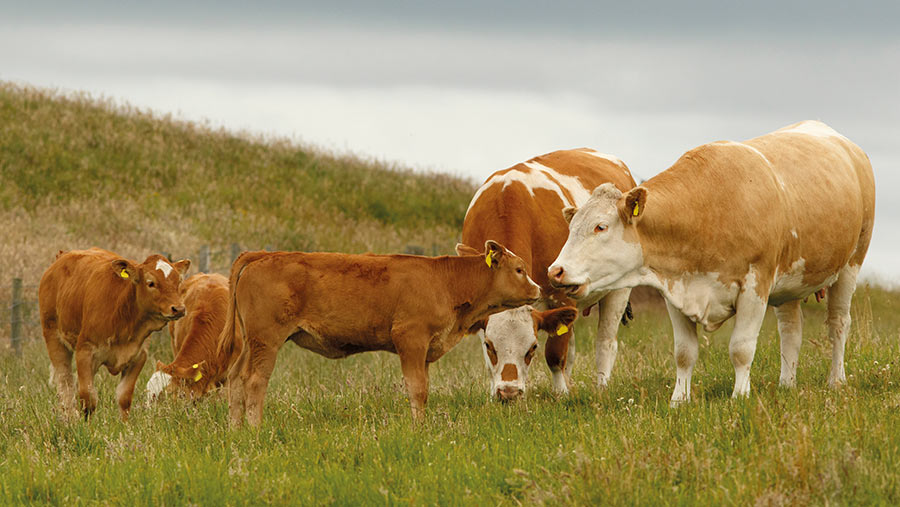Trade up £250 on year as Scots cash marginal cows
 Brais Seara/Adobe Stock
Brais Seara/Adobe Stock Scottish cow values have resisted a seasonal supply lift, meaning farmers exiting the sector or downsizing have continued to get £4/kg deadweight for the better cows.
Red-hot demand for mince has meant beef cows were 17.5% dearer through the live ring last month at 178p/kg, while deadweight trade is 70-80p/kg up on the year, making a 320kg carcass £225-£250 dearer on the year.
This is despite Scotland’s live markets selling 22.5% more cows on the year over the past four weeks. Of the 2,270 sold, 77% were suckler cows.
See also: Opinion: Support needed to halt the decline in suckler cow numbers
Culls up 40%
Cull cow numbers are up 40% on the year at Thainstone as farms cull any faulty cows, but trade is flying. Fleshy suckler cows have made 200p/kg and feeding cows 180p/kg.
Aberdeen and Northern Marts auctioneer Tim McDonald said: “The sad reality is a cow is worth more empty than she is in calf or with a calf at foot.”
Barley at £250/t and waste potatoes at £30-£40/t meant feeding cows was uneconomical, so more cows had been sent straight to kill; mainly as manufacturing beef as the cost of running chillers was climbing.
“Butchers are faced with high electricity costs too, so if you can just kill, bone out, mince or cube the cow, you save on three weeks of hanging in a chiller,” Mr McDonald said.
While some farms had dispersed, he said more were cutting numbers, going from 200-300 to 80 or 150, for example, and opting to be a breeder finisher, rather than selling weaned calves or stores.
Mince sales strong
Fears are growing that the suckler herd is continuing to contract, with higher cull cow volumes and cows not being replaced.
Iain Macdonald of Quality Meat Scotland’s market intelligence team pointed to the last three quarterly cattle population reports from BCMS, which showed that the number of beef-sired females over 30 months of age was down 0.4% year-on-year in January, down 0.7% in April and 1.4% in July.
However, he said Kantar data showed that mince demand was strong and trade might remain firm.
Furthermore, currency fluctuations had made British product more affordable overseas, which could help an already booming export year.
“The average US steer price was recently actually higher than the Scottish price,” he said. “In the second half of September it rose by 1% in dollars but 8% in sterling.”
This was a 35p/kg increase, which was up 15% up on the year in dollars but about 45% in sterling, due to the weak pound.
